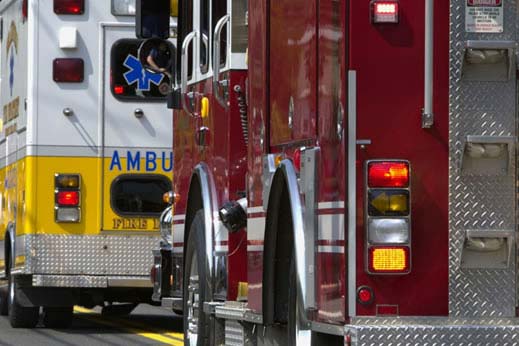How to Handle Approaching Emergency Vehicles on the Road

Always be alert: there could be more than one emergency vehicle approaching.
We’ve all heard that ambulances can make traffic lights turn green, but when there are other cars in their way, that doesn’t necessarily help them. In order to ensure that emergency vehicles get clear passage to respond to situations quickly, there is a protocol that drivers must follow when an emergency vehicle is approaching.
What Counts as an Emergency Vehicle?
Emergency vehicles could be any of the following:
- Ambulances
- Fire trucks
- Police vehicles
- Privately owned vehicles used by firefighter or life support agencies
If any of these vehicles are behind you and have their sirens activated and lights on, you need to clear a path for them.
The Steps You Should Take
The National Highway Traffic Safety Administration (NHTSA) provides a set of steps under the acronym SIREN to help drivers understand what they should do in this situation. The SIREN protocol is as follows:
- Stay Alert: As a driver, this is something you should be doing at all times anyway, but there is special emphasis on listening to your surroundings so that you can hear emergency vehicle sirens or horns. This means paying attention to the road, keeping the music down in your car, and possibly even driving with your window cracked to better hear outside the vehicle. When you hear an emergency vehicle’s sirens, look to see where it is on the road.
- Investigate: Look in your rearview mirror as well as to the sides of your car to gauge how fast the emergency vehicle is going and to figure out what you will do next.
- React: Pull over to the side of the road safely, signaling as you do so to alert the driver of the emergency vehicle of your intentions. Though it’s important to react quickly, you shouldn’t put yourself or anyone else in danger. After pulling over, wait until the emergency vehicle has passed, and look for others—there may be more than one on the way.
- Enter: Next, re-enter the roadway. Be sure it is safe for you to get back on the road, then signal and merge with traffic. If you are on the side of the highway, be extra careful as you will need to get up to freeway speeds.
- Never: There are a few things you should avoid doing in this situation. Don’t pull over or stop somewhere if there isn’t enough room for you to do so safely. You should also never follow an emergency vehicle or try to pass one. Remain a minimum of 500 feet behind a moving emergency vehicle that has its lights and siren on.
What If I See a Stopped Emergency Vehicle?
If this is the case (for instance, emergency responders are helping individuals involved in an accident), you should reduce your speed and move over a lane if you can. If you’re unable to change lanes, you will need to slow down and proceed cautiously. This is known as the “Move Over Law,” and it applies in all 50 states.










